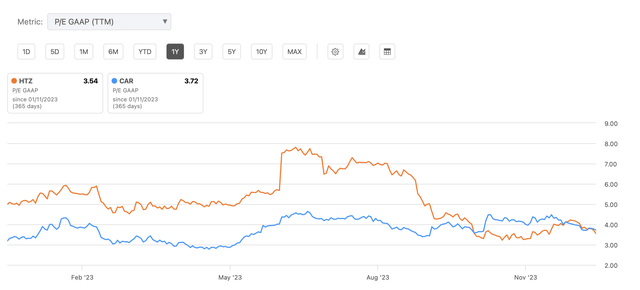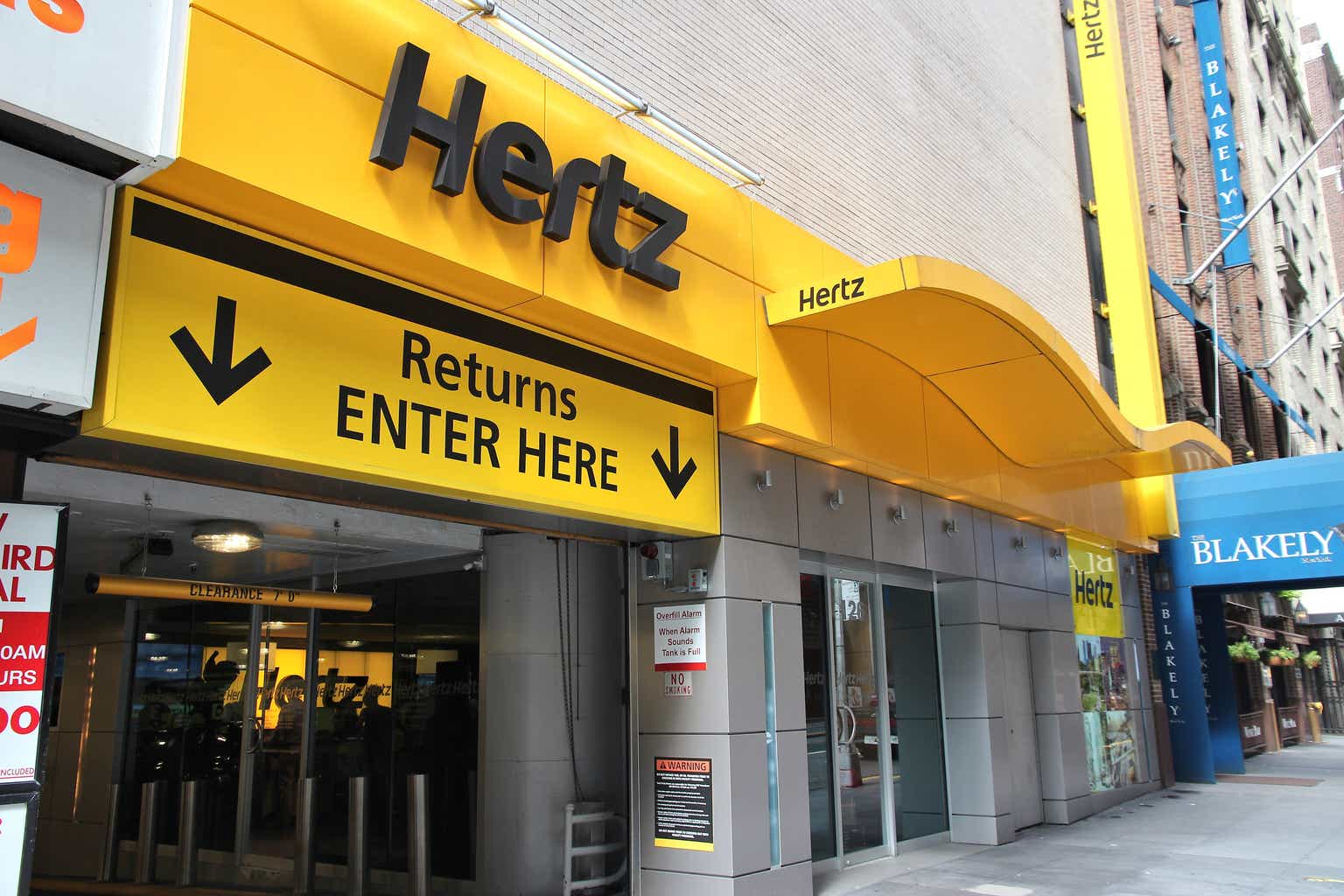tupungato
Investment Thesis
Hertz Global Holdings (NASDAQ:HTZ) faces a bumpy road ahead after its ambitious push into electric vehicles failed to gain traction. Selling off nearly a third of its EV fleet represents a drastic reversal from previous pronouncements that “EVs are now mainstream.” Financial damage has already emerged through higher expenses and impairment charges. Lingering high debt levels coupled with rising interest rates have led to alarming coverage metrics versus rental car peers like Avis Budget Group (CAR). Until Hertz can demonstrate improving margins, stable interest coverage, and consistent execution, upside in shares seems limited.
Hertz’s Tesla Inventory Dump
In an announcement today, Hertz stated it is selling about one-third of its global EV rental fleet, representing around 20,000 vehicles. This move represents a reversal from 2021 when Hertz made a splashy announcement to purchase 100,000 Teslas by the end of 2022. Tesla (TSLA) stock gained over $100bln in market cap that day. At the time, former Ford CEO Mark Fields, serving as interim Hertz CEO, proclaimed that “electric vehicles are now mainstream, and we’ve only just begun to see rising global demand and interest.”
The demand failed to materialize as hoped, with the company explicitly stating in its 8k filing that it was selling the Teslas “due to changes in supply and demand dynamics.” Part of the issue lay with EV repair costs that ran double that of regular internal combustion engine vehicles. Hertz also cited sharp declines in used Tesla values, which has lowered the book value of its EV fleet inventory. Offloading part of its EV fleet will result in a one-time $245 million non-cash impairment charge. Hertz expects this move to boost future earnings by almost the exact same amount over 2023-2024 as it swaps into traditional gas-powered vehicles.
While credit is due for Hertz to cut its losses, the company finds itself in this position after prematurely scaling its EV purchases before properly assessing consumer uptake and fleet management dynamics. Rushing headfirst into an “EV mainstream” future clearly backfired.
Balance Sheet Profile
Hertz holds long-term debt of over $3.1 billion, which is over 6x trailing EBITDA. Rising interest rates have led to a surge in servicing costs, with Q3 interest expenses up more than 3x year-over-year to $225m/quarter. In other words, interest expense consumed ~48 cents of every operating income dollar earned last reported quarter. Compare this to Avis, which is at 27%.
Unfortunately, reducing debt remains challenging when management prioritizes share buybacks. Over $3 billion has been spent on repurchases since 2021, with an average share price above $19 versus the current sub $9 market price. In my opinion, returning excess capital to shareholders should only come once operations demonstrate consistency and stability. Hertz attempts a business shuffle amidst precarious interest coverage metrics, heightening risks.
Competition
The intensely competitive rental car space leaves little room for prolonged stretches of underperformance. Avis Budget Group represents Hertz’s largest competitor and has excelled both financially and operationally over the past two years. Avis generates substantially higher margins and revenue growth compared to Hertz, while carrying reasonable leverage below 2x EBITDA. Hertz’s inferior margin profile and interest coverage dynamics prevent any justification for a premium valuation versus Avis at this juncture. Newer entrants like Kyte, along with ridesharing platforms and peer-to-peer car-sharing marketplaces, present further competition, and Hertz must continue enhancing its operations and service levels to attract and retain patrons.
Buybacks in the Face of Operational Instability
Paying down debt ranks among the smartest capital allocation moves Hertz can make to strengthen its financial footing. Share repurchases should only resume once management demonstrates strides shoring up the operating profile. Again, continuing buybacks amidst Hertz’s current suboptimal interest coverage and uneven execution introduces unnecessary risk. The company requires time to properly assess the fallout from its aborted EV push, including the potential for spillover effects that could hamper revenue or margins. Until we witness stability in the financial and operational metrics over a few quarters, share repurchases divert critical resources away from business reinvestment opportunities.
Valuation
Hertz curiously trades at a premium forward P/E multiple of 5.2x compared to chief competitor Avis Budget Group’s cheaper 4.1x multiple, despite Avis’s superior financial metrics and performance. While on an absolute basis both offer a substantial margin of safety, continued business challenges and declining profit outlook don’t help. Conviction behind meaningful multiple expansion appears lacking until management demonstrates consistent execution.
Relative Valuation TTM (Seeking Alpha)
Upside Catalysts
- Faster than expected debt repayment using excess liquidity and free cash flow generation. This would reduce interest expenses and risk.
- Demonstrating effective EV fleet management upon relaunching purchases. Achieving lower rental pricing degradation and repair costs than the initial Tesla rollout.
- Additional cost-cutting and productivity enhancements leading to improved margins.
- New business initiatives or revenue streams gaining traction and reaching profitability.
Downside Catalysts
- Persistent used car pricing degradation causing increased depreciation expenses and lower residual values.
- Reintroducing sizable share repurchases without meaningful improvements in the operational and financial metrics, leaving the company dry.
- Further rise in interest costs from debt refinancing or heightened leverage ratios.
- Additional impairment charges or unforeseen expenses tied to the scaled-back EV fleet.
Conclusion
Hertz garners a Hold rating following its drastic EV inventory reduction and financial repercussions. While the company deserves some credit for decisively cutting losses, uncertainty persists regarding additional impairment charges and used vehicle depreciation expenses given the likelihood of further price declines. With interest costs consuming nearly half of operating income and share buybacks continuing amidst operational instability, risks seem heightened. I’m waiting for more convincing signs of stabilization in the financial profile and core business consistency before reconsidering my stance.
Credit: Source link












































